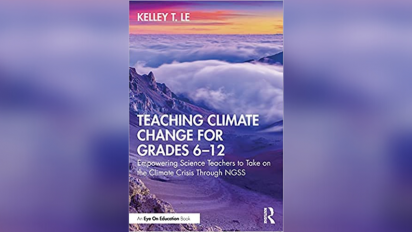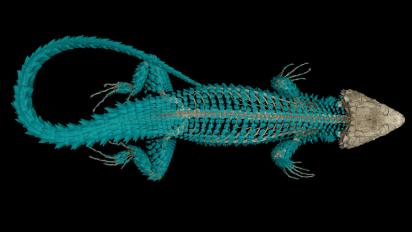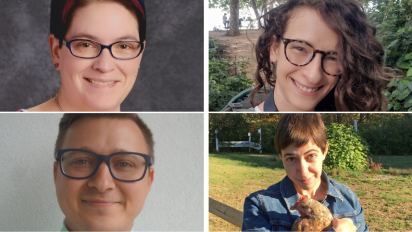Vertebrates anytime, anywhere
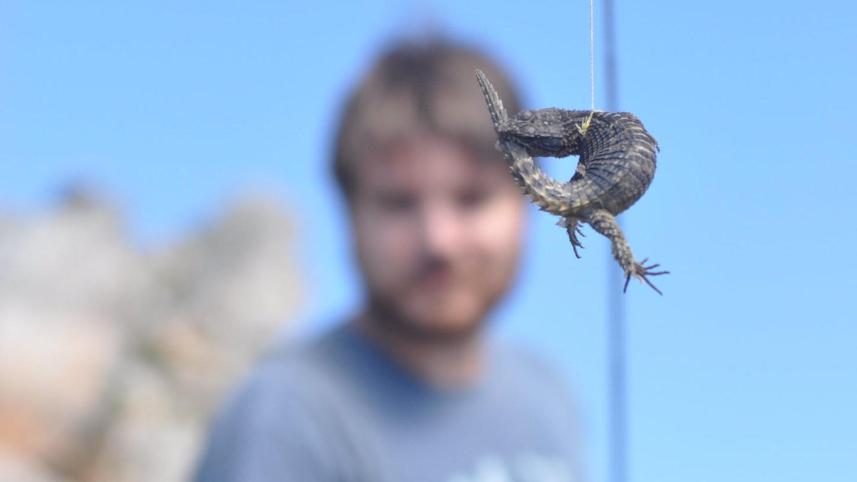
All photos courtesy of Edward Stanley, Florida Museum of Natural History.
The Isle of Wight, located off England’s southern coast, is a quintessentially English seaside destination. People flock there during holiday to experience the island’s many family-friendly activities, from walks along the shore to castle explorations. Paleontologist Ed Stanley’s family vacationed there every summer during his childhood. Once, when he was seven or eight, he and his parents visited a natural history museum on the island, which is a rich source of fossils. The young Stanley saw that a dinosaur foot was clearly mislabeled — the foot had too many toes for the dinosaur to which it was purported to belong. He told his father, who then ushered him over to a museum scientist.
“‘Look, can you tell our kid he’s wrong about this?’” Stanley remembers his father saying. The scientist responded that in fact Stanley was right — that the interpretative signage was out of date. And then the scientist did something that has stayed with Stanley all these years: he invited the family behind the curtain, so to speak, to see more of the museum’s specimens and learn how they were cared for and prepared. “This isn’t an I-was-right story. I was just a brat,” Stanley says self-effacingly. “But the important part was when the scientist invited us to the back. It didn’t cost him anything to do that, but he certainly didn’t have to. And it was unbelievably cool.”
It was a formative experience, Stanley says. Now the Director of the Digital Discovery and Dissemination Laboratory at the Florida Museum of Natural History, Stanley is able to take a turn giving others a behind-the-curtain peek at museum specimens. A central part of his work involves using computed tomography (CT) to turn all kinds of organisms into online manipulable three-dimensional models. He has used the technology to digitize reptiles, amphibians, fish, and even insects. “In every museum that has a collection, the vast majority of specimens are unavailable to the public and quite frankly inaccessible to researchers as well,” Stanley says. “Philosophically, I have a very strong feeling that natural history museum collections should be as open and accessible and available to people as possible. Historically, natural history museum collections have not been that. They started off as these cabinets of curiosities for aristocrats to show off their weird things — they were literal cabinets in their houses that only they and the people around them saw.”
Philosophically, I have a very strong feeling that natural history museum collections should be as open and accessible and available to people as possible.
The scanned images of organisms that would otherwise be stored away and inaccessible are marvelous. The Mexican beaded lizard (Heloderma horridum), for instance, is colorized bright green, its body coiled and open jaws displaying sharp teeth. A 3D animation lets the viewer circle around the lizard’s skeletal structure. And this image, and a host of others, can be experienced by anyone from just about any Internet-connected device.
Stanley was a pioneer in the use of high-resolution CT scanning. While at the American Museum of Natural History a number of years ago, he used the technique to study the morphology of armored African lizards, particularly the variation among species in the bony elements in their skin. Once he appreciated the power and benefits of being able to examine 3D-digitized artifacts — the experience for the viewer is for all intents and purposes free, specimens are not destroyed in the process, and the viewing can happen virtually anywhere and anytime — Stanley began considering ways to expand access to the CT scans. He and his colleagues at the Florida Museum of Natural History decided to collaborate with Doug Boyer at Duke University, the mastermind behind the MorphoSource website, to develop the openVertebrate (oVERT) project, which aims to provide free digital 3D vertebrate anatomy models and data to researchers, educators, students and the public. oVERT was ultimately funded by a large National Science Foundation grant, on which Stanley and Boyer are among the co-principal investigators.
“The thing that the oVERT project allows you to do is to build this kind of evolutionary framework around any question,” Stanley says. “You might think it would be interesting to study the evolution of limblessness in a group. But if you can only get access to a small number of specimens, you would decide to just look at a very small part of the question. But now that we have these data up and available and free to use, suddenly, if you wanted to do a study of limb loss across all vertebrates, you could absolutely do that. That’s suddenly on the table. Or if you wanted to teach a class about convergent evolution, for example, you could download any dataset you want. So now you can tailor classes and lessons to the people in your class. If you have people who are super interested in hummingbirds, you can show the convergent evolution of the throat bones in honeycreepers and hummingbirds.”
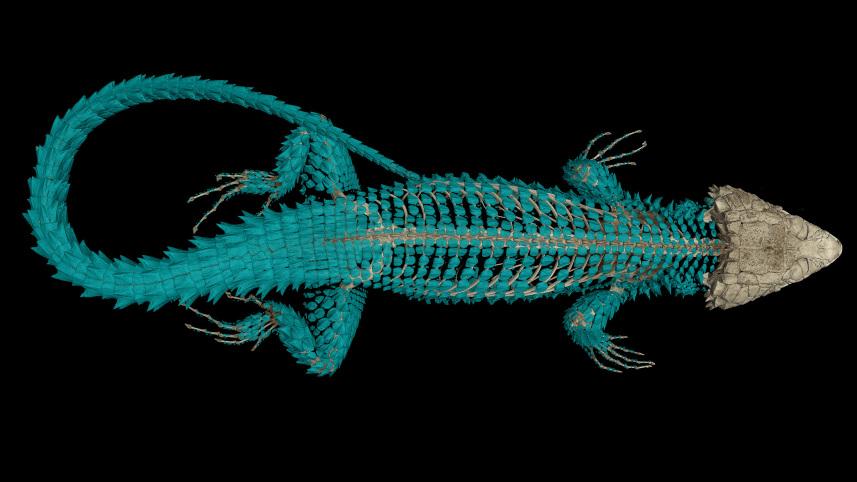
Stanley goes on to offer an example of his own “any question” moment. “I was thinking the other day, ‘I wonder if the tear duct of lizards changes in shape or size based on whether they live in a dry or wet area.’ Just off the top of my head. So instead of having to write a big grant to go and travel to all these different museums and get permission to dissect these things, I just download 10 different datasets. And then I’m able to say, ‘Oh yeah, that seems to hold up,’ or, ‘That seems like an interesting thing I can pursue further,’ or, ‘Nah, there doesn’t seem to be any pattern there, that was a waste of time.”
The oVERT site has garnered millions of pageviews and tens of thousands of downloads. About half of the users the project has been able to track are researchers, a quarter are educators, and the rest are a “grab bag,” as Stanley puts it. A great number of engagements have come from artists who are interested in deeply understanding organic forms. “Artists are often extraordinary anatomists,” Stanley says, “because they have to understand how the scaffold of a body works in order to paint or draw things in a realistic way. It’s always fun to see people using oVERT in a way that we weren’t expecting.”
One component Stanley purposely wrote into the oVERT grant was the offering of professional learning opportunities for high school science teachers in the use of the website. It was at one of these sessions that Stanley met NCSE Teacher Ambassador Jennifer Broo, who wound up developing a lesson that included the oVERT website as a primary resource. And when Lin Andrews, NCSE’s Director of Teacher Support, reached out to the teacher ambassadors seeking ideas for speakers for an evolution symposium NCSE was hosting at the National Association of Biology Teachers conference in 2021, Broo enthusiastically offered up Stanley as a possibility. The talk would center on the evolution of limblessness in snakes to coincide with an activity in NCSE’s newly launched evolution Lesson Set One: The Origin of a Species. Speaking after Stanley at the Symposium would be NCSE Teacher Ambassador Rebecca Brewer, who helped design and write up the activities in the lesson set.
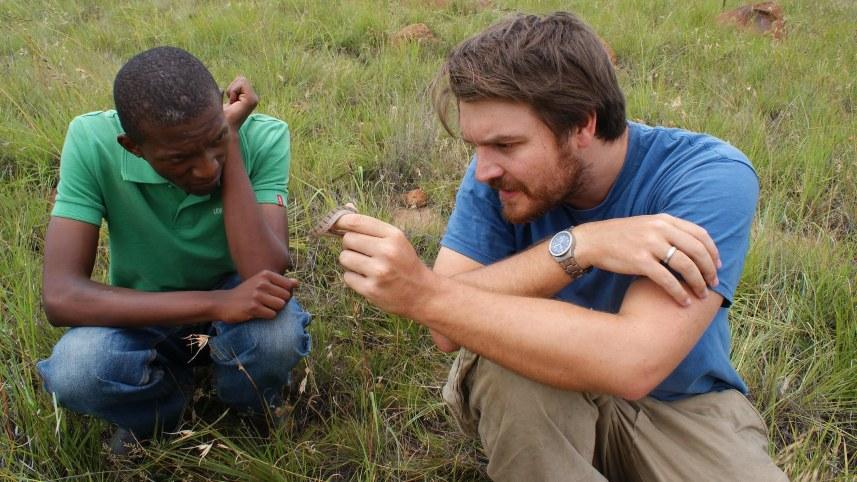
Though snakes don’t constitute his area of research, Stanley was glad to speak to the audience of educators. (View the entire symposium below.) His fascination with the topic was evident: he was animated and enthusiastic and funny. “It’s hard not to like squamates,” Stanley explains. “The squamates are the most diverse form of tetrapods. They’re massively successful. They live everywhere. And the crazy thing is, a lizard-like body form is what people think of as being quite primitive — it hasn’t changed for hundreds of millions of years. A ton of them have lost their legs for a number of reasons. One of those lineages that lost its legs accounts for one third of all squamates, and they’re adapted to all of these different environments. A legless lizard is a pretty restricted body plan. It’s a head, and a long torso, and then a small tail. And that’s not a lot to work with. But snakes — which is the lineage I’m talking about — have done amazing things! They’ve evolved venom, some of them are warmblooded or at least can control their body temperatures by shivering, they give birth to live young, they lay eggs, they live in the sea, they live on land, they live underground, they live up in trees — they’ve colonized the entire world!”
Stanley says he tries to make a point — in his day-to-day conversations with educators and young people as well as in his talks — of conveying his sense of excitement and enthusiasm about the natural world because he knows from his own experience that it can make a difference. True, people’s interest in things can wax and wane, and this is especially true for seven- and eight-year-olds. But the right interaction at the right moment with an engaged museum scientist might just turn an interest into a vocation.
This version might differ slightly from the print publication.



